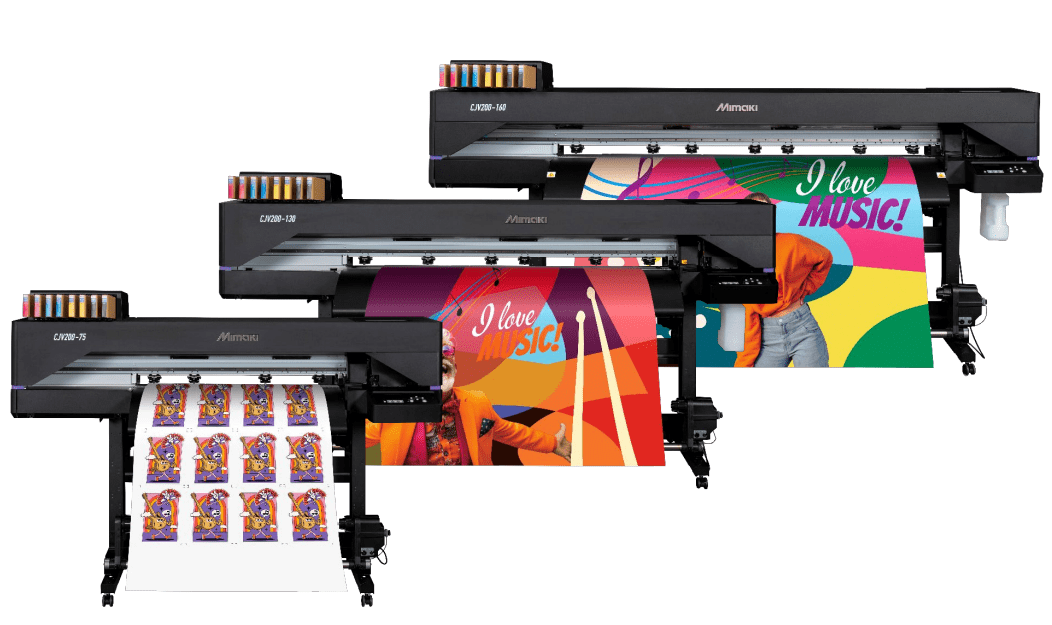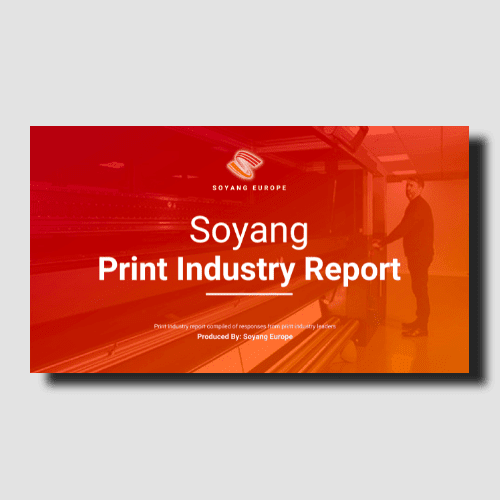You’ve got print projects on the order book. But if you’re going to deliver the goods, you’re going to want to match the right printer with the right ink.
Not so long ago, solvent inks really were the go-to ink of choice for professional printers. As we’ll explore below, the relative low cost and the fact solvent inks would adhere to practically anything made them the front runner for all sorts of large format printing.
Unfortunately, the toxicity of solvent inks wasn’t (and still isn’t) good for the environment or the health of people who worked with them, so the industry moved on.
Today, there’s a new generation of less harmful solvents, and a range of wider alternatives to explore. Each large format printer will be designed with a manufacturer’s recommended ink in mind, but which is right for your work?

Solvent inks
What are solvent inks?
Solvent ink’s two components (the solvent and the ink) have two distinct roles.
The ink is the pigment that provides the colour. The solvent is the carrier that helps the pigment penetrate the substrate before evaporating.
Even next generation solvent inks still contain solvents, so even though the volatile organic compounds (VOCs) of old are being switched out for lesser offenders, you’ll still find wide format prints produced using solvent inks carry that distinctive chemical smell. It’s for this reason a) you should only print using such inks in a well-ventilated room and b) you probably don’t want to fill a café, restaurant or child’s bedroom with solvent ink-printed décor.
Applications of solvent inks
The hard-wearing longevity of a solvent ink makes it ideal for banners and rolled, self-adhesive PVC of the sort used to create vehicle wraps. You should get five years of life from the print material before it starts to fade, and more still if you overlaminate.
When to choose solvent inks
Solvent ink offers a vast and vivid colour range and remains a cost-effective option. That’s truer now than ever, because where other inks require expensive energy (e.g. light or heat) to cure or dry as part of the process, the solvent does the job on its own.
That said, the evaporation process (known as outgassing) takes a while – 24 hours typically – and the solvent can have a punishing effect on the printer. You’ll need very regular printer maintenance to keep the print heads clog free.
Eco-solvent inks
What are eco-solvent inks?
Want the same colour range and vibrancy without the nasty VOCs of solvent inks?
Eco-solvents don’t entirely eliminate VOCs, but they do reduce them significantly by switching to ether, an extract which delivers a mild and biodegradable solvent. You’ll notice the much-reduced odour. You’ll also notice that the solvent is kinder to your printer.
Like solvents, eco-solvent inks need outgassing. Prints that use a lot of ink may need up to 72 hours’ outgassing time before lamination.
Applications of eco-solvent inks
The colour richness and vibrancy has made eco-solvent inks a good all-rounder for wide format printing. Signage, banners, vehicle wraps and exhibition graphics all achieve good results with eco-solvent inks.
When to choose eco-solvent inks
It’s more a case of when not to choose them for your large format print. Eco-solvent inks tend to be a little pricier than some other options, but the bigger issue is the drying time. Providing you won’t face major bottlenecks in your production process, eco-solvent is likely to be a good go-to option.



UV inks
What are UV inks?
UV inks, as the name suggests, use ultraviolet light to spark a reaction called polymerization within the ink. This initiates an immediate ‘hard’ cure, so there’s no waiting for outgassing and no need for lamination.
Applications of UV inks
Lots! UV inks are a good all-rounder in most applications, but they can be a little more brittle than alternatives, making them unsuitable for substrate liable to stretching. For that reason, you might want to avoid using UV ink for banners which might billow in the wind, or on vehicle skins.
When to choose UV inks
When you want a tough finish that works well across a wide range of non-stretchable substrates.
Latex inks
What are latex inks?
Solvent inks use solvents to carry the ink. Latex inks use water-based latex (and other resins). That water needs to be removed during the print process, and this is done through the application of heat once the pigment has been delivered.
Applications of latex inks
This is the ink of choice for the printer who wants to be able to complete large format print projects free from the damaging effects of VOCs. The lack of chemical smell makes them ideal for wide format print in public spaces (exhibitions, retail spaces, signage etc), although you’ll want to overlaminate prints to improve their durability.
When to choose latex inks
Unlike solvent inks, latex inks don’t penetrate the print substrate. Marketing material often describes this as presenting a wider range of print material options. The reality is the heating process can be a limiting factor in some instances (you probably don’t want to pass thin vinyls through a heating process unless you want to scrape molten vinyl off your print heads). Still, this is still a good option where odour-free, VOC-free printing is essential. The fast turnaround doesn’t hurt either.
Talk to Soyang
Need help choosing your print materials? Talk to Soyang.










